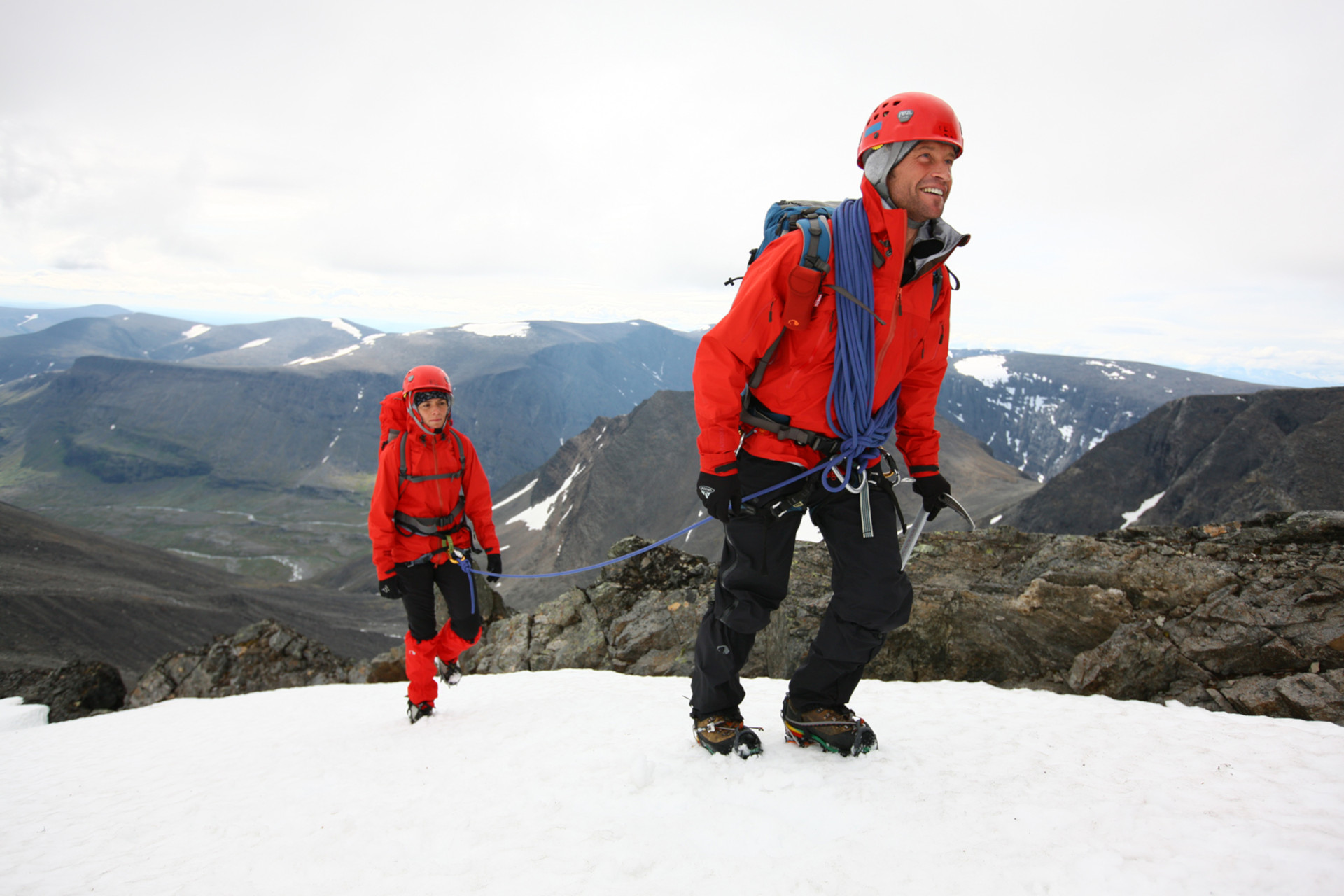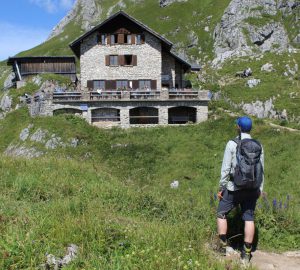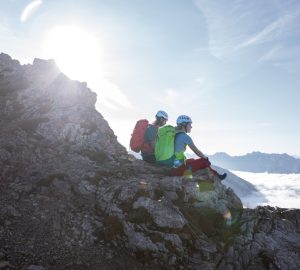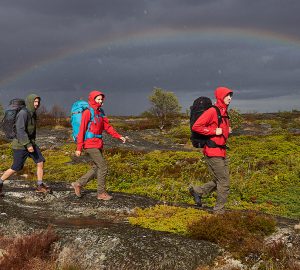When summer arrives in the valley, many mountaineers are drawn up onto the glaciers. Mid-June to September is the season for glacier tours in the Alps. This is when the crevasses are most visible and the risk of falling from the crevasses is reduced. We have summarized some important tips so that you can start your first glacier tour well prepared and safely.
A glacier tour is not something you undertake on the spur of the moment. A tour like this needs to be well prepared and requires a lot of equipment and knowledge. That’s why you should definitely hire an experienced mountain guide. They can help you choose the right equipment and will take you safely up and back down again.
In addition, the German Alpine Club (DAV) or the Swiss SAC, for example, offer glacier courses lasting several days. There you will learn everything you need to know to get along well on the glacier in any situation. This includes, for example, crevasse rescue, safe walking with crampons and ice axe, braking techniques when slipping on firn or basic knowledge about orientation and weather.
Tips for the preparation phase
Train your stamina: On a glacier tour in the Alps, you will be above 3,000 meters most of the time. You will feel the thinner air and its lower oxygen content with every meter of altitude you climb. A good level of fitness is therefore really important if you want to complete the tour safely and have fun.
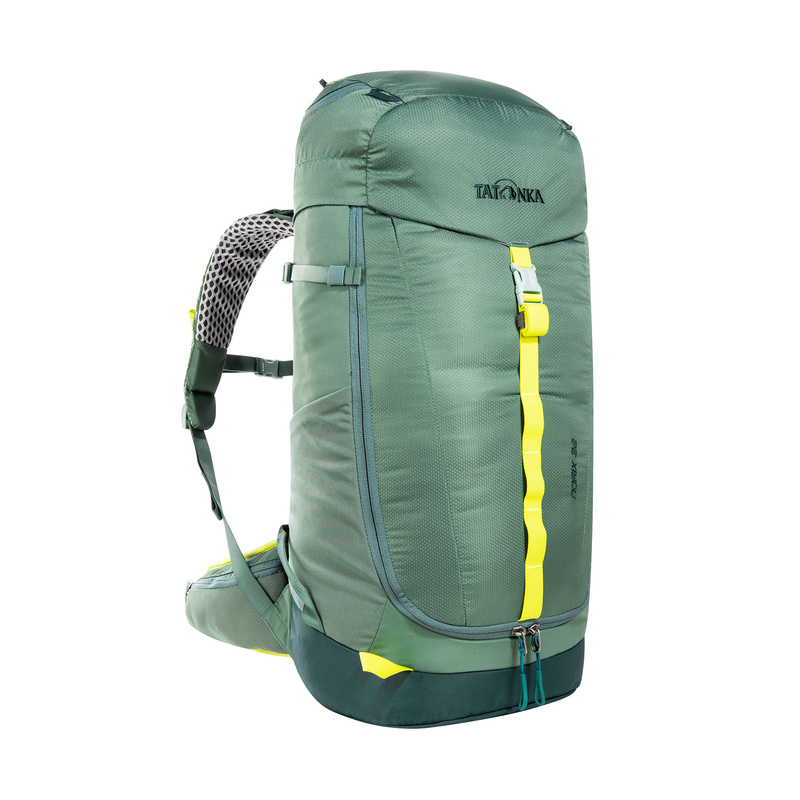
At Tatonka you will find backpacks for your next tour – whether hiking, trekking or climbing.
Familiarize yourself with your equipment: It might be a little difficult to simulate a crevasse rescue in your living room. But you can optimize the quick and correct donning of your crampons and climbing harness at home or in the garden, for example. The same applies to tying into the rope correctly or the most important climbing knots. The more familiar you are with these moves, the safer you will feel on your first glacier tour.
Go to a climbing hall and test yourself: How do you cope with the height? Can you climb simple lead routes safely and with little effort? In alpine terrain, you always have to belay yourself or abseil, which you can also practise in the climbing gym.
Reading tip: Basic via ferrata knowledge for beginners – tips for a safe via ferrata tour
Tips for choosing a tour
Glaciers of varying degrees of difficulty await you in the Alps. Classic glacier tours for beginners include the Similaun in the Ötztal Alps, the Schwarzenstein in the Zillertal or the Großvenediger in the Hohe Tauern. If you want to go a little further, the Bishorn or Breithorn in Switzerland are worthwhile destinations to start with.
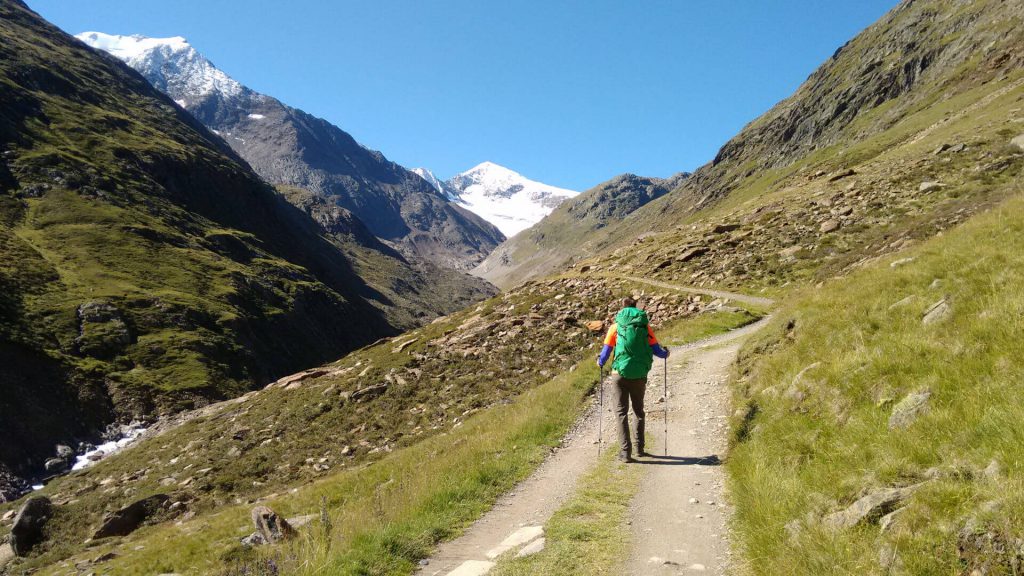
A sudden change in the weather or unexpected bare ice can turn even an easy tour into a difficult challenge.
Mid-June to September is the season for glacier tours in the Alps.
Even for experienced and fit mountaineers, it makes sense to plan an overnight stay in a hut. After all, you will start before dawn and can therefore tackle the tour (relatively) well rested. It’s also great fun to sit together in the hut in the evening and plan the next day. Tip: Book your overnight stay in the hut in advance to avoid getting into trouble.
Equipment tips for a glacier tour
The outer layer of clothing for a high alpine tour should be as light, robust, wind- and water-repellent as possible and offer sufficient freedom of movement. Functional materials as an additional layer transport sweat to the outside and prevent you from cooling down due to sweaty clothing.
Good to know: Planning and preparing hut tours – basic knowledge for a successful hut tour
You should wear long sleeves on a glacier. In the event of a fall, the small ice crystals will otherwise scrape your skin painfully. It’s also great sun protection. Make sure your hiking boots are suitable for crampons and don’t forget your gloves, hat and glacier goggles. You should also pack them in your backpack:
- Hip belt
- Impregnated half rope (9mm) with a length of 50 meters
- 1 Safelock carabiner for tying in
- 2 screw carabiners, 2-3 normal carabiners
- Rope cords in various lengths
- webbing sling
- Crampons
- ice axe
- 2-3 ice screws per rope team
- helmet
Hooked? We have another exciting report from our colleague Michi Bösiger about what he experienced on his Matterhorn ascent.
Also worth reading: Zinal Glacier – Pure adventure in the eternal ice (tatonka.com)




